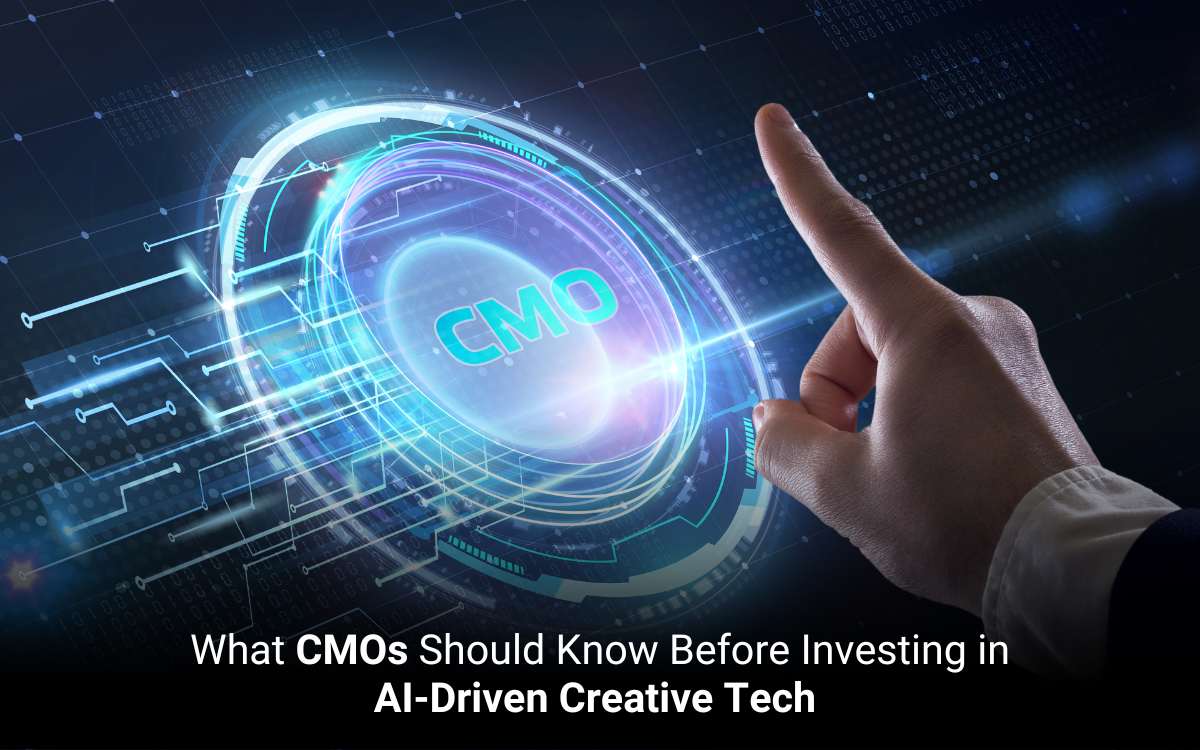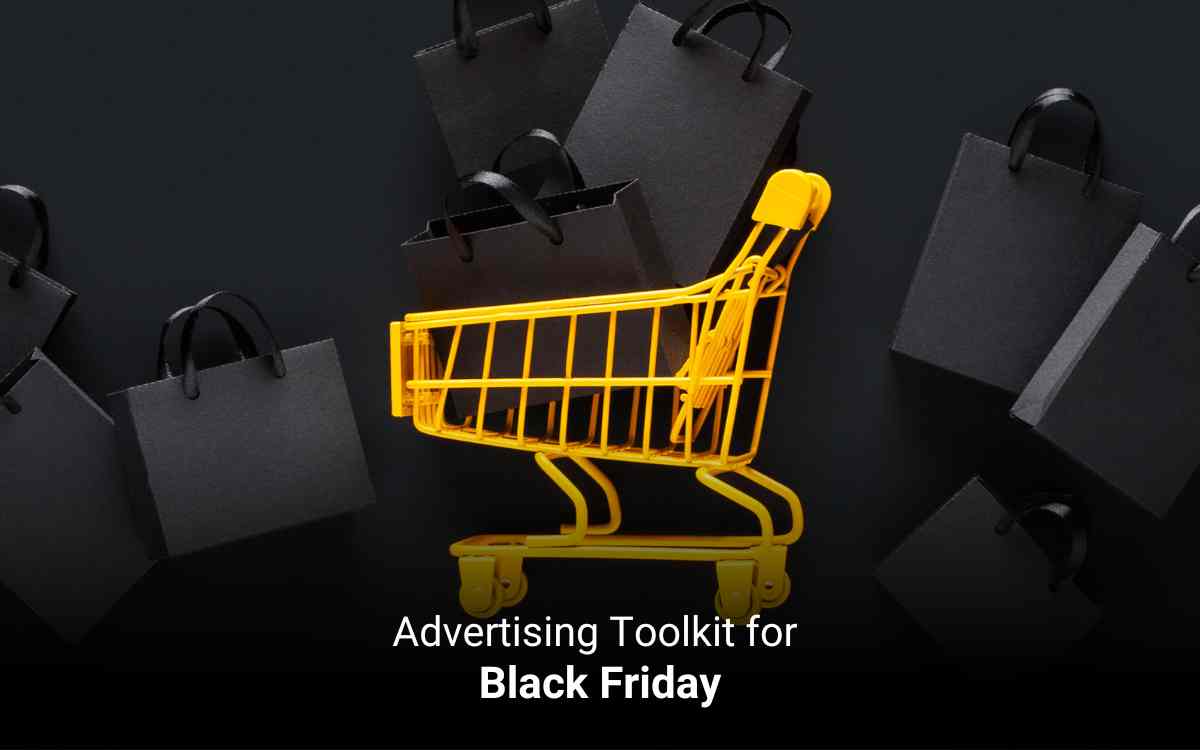You’re a CMO preparing for your next campaign launch. When you think you’ve covered all bases, a competitor launches a personalized ad campaign with AI-generated content, delivering results at a fraction of the time and cost. Suddenly, you realize that it is not enough to keep pace. This is why you need AI-driven creative tech.
AI-driven creative tech refers to platforms that use AI to generate, optimize, and scale marketing content. The importance of AI in marketing lies in its ability to help solve three persistent challenges: speed, personalization, and efficiency. But beyond operational gains, there’s also a strategic imperative. AI-driven creative technology also helps bring creativity and data together.
This article will discuss why CMOs should consider AI-driven creative technology.
Why Should CMOs Care About AI-driven Creative Tech
Here’s why CMOs need AI-driven creative tech.
1. Scaling Content Without Scaling Costs
With AI content generation, you can produce high-quality creative assets, whether it’s personalized ad copy, email variations, or product visuals.
Example: A SaaS company can generate multiple landing pages for different industries using AI, without needing to expand its teams.
2. Personalization at Scale
AI in marketing enables personalization that goes beyond inserting a name in an email. It can adapt tone, messaging, and visuals based on industry, company size, or role.
Example: A cybersecurity firm uses AI to tailor ads for CIOs, highlighting compliance, while CTOs see content on technical integration.
3. Speed to Market in Competitive Environments
AI-driven creative technology accelerates campaign execution, enabling brands to respond to competitor moves or market shifts.
Example: A payments provider can launch AI-generated LinkedIn campaigns within days when new regulations hit, before competitors react.
4. Data-Driven Creative Optimization
AI can analyze engagement data in real-time, generating variations that improve click-throughs, conversions, and pipeline velocity.
Example: A cloud solutions firm leverages AI to optimize LinkedIn ad headlines mid-campaign, resulting in increased lead form submissions.
5. Maximizing ROI Under Budget Constraints
AI in marketing helps stretch budgets further by automating repetitive creative tasks while freeing teams to focus on strategy and storytelling.
Example: A logistics company reduces agency costs through AI-driven content generation while reinvesting savings into ABM.
6. Future-Proofing the Marketing
CMOs who embrace this position in their organizations for long-term advantage, while others risk losing relevance in buyer conversations.
What Are the Risks of Investing in AI-Driven Creative Tech?
The following are the risks associated with implementing AI-driven creative technology, along with their corresponding solutions.
1. Risk: Brand Dilution Through Generic Output
AI content generation can sometimes create messaging that feels off-brand, weakening differentiation.
Solution: Establish strict brand guidelines and train AI models with proprietary tone-of-voice data.
Example: A SaaS firm ensures its AI-generated whitepapers follow a structured brand voice by feeding past thought-leadership content.
2. Risk: Data Privacy & Compliance Concerns
Utilizing customer data to fuel AI in marketing presents compliance challenges, particularly in regulated industries. Missteps could trigger legal risks.
Solution: Partner with AI vendors that provide security, audit trails, and compliance certifications (e.g., GDPR, HIPAA).
Example: A healthcare solutions provider vets an AI platform to ensure that it is HIPAA-compliant and can deliver personalized content to clients.
3. Risk: Over-Reliance on Automation
Leaning too heavily on AI could sideline human creativity, leading to campaigns that lack emotional depth and originality.
Solution: Balance automation with human oversight to inject storytelling and empathy.
Example: A FinTech firm leverages AI to generate campaign drafts, while brand strategists refine narratives to highlight credibility.
4. Risk: Quality Control
AI tools can produce errors, biased messaging, or irrelevant content, which can damage credibility with decision-makers.
Solution: Implement a quality assurance workflow that requires human reviewers to approve AI outputs before publication.
Example: A cloud provider caught an AI-generated case study with factual inaccuracies, preventing escalation.
5. Risk: Hidden Costs of Implementation
While AI promises efficiency, hidden costs such as training, integration, and change management can offset ROI.
Solution: Conduct a phased rollout with clear ROI benchmarks and change management plans.
Example: A logistics firm pilots AI-driven ad copy generation in one region before scaling globally, minimizing disruption.
6. Risk: Resistance from Teams
Creative and marketing staff may view AI as a threat to their roles, creating hurdles to adoption.
Solution: Offer training and highlight how automation reduces repetitive tasks.
Example: A manufacturing company trained its marketers on AI tools, demonstrating how they can free up time for strategic planning.
How Can CMOs Evaluate AI Tools Before Investing?
The following are the ways through which CMOs can evaluate AI tools.
1. Assess Alignment with Business Objectives
CMOs should evaluate whether the platform supports marketing goals such as lead generation, ABM, or customer engagement.
Example: A SaaS company investing in AI content generation validates that the tool can produce landing pages that directly support pipeline growth.
2. Test Output Quality
Basic content can dilute brand trust. CMOs must assess whether the tool can be trained to maintain tone, style, and accuracy.
Solution: Run controlled pilots where AI-generated campaigns are compared against the others.
Example: A financial services firm tested AI-driven email copy for C-level decision-makers, ensuring it reflected their positioning before scaling.
3. Check Integration with Existing Tech Stack
An AI platform is only as good as its ability to work within existing systems (CRM, automation, analytics). If integration fails, adoption slows and ROI drops.
Solution: Prioritize tools that have APIs or are compatible with platforms like Salesforce, HubSpot, or Marketo.
Example: A logistics provider integrated AI-powered creative testing directly into its HubSpot workflows to automate campaign optimization.
4. Analyze ROI and Ownership
Despite cost savings, expenses such as training, customization, or workflow disruptions can reduce value.
Solution: Define success metrics upfront and initiate a phased deployment to demonstrate ROI.
Example: A manufacturing firm piloted AI-generated ad copy in one market, tracked the conversion lift, and used the results to justify a rollout.
5. Gauge User Adoption and Cultural Fit
Even the best AI tool fails if teams resist it. CMOs must ensure ease of use and emphasize that AI is not a threat.
Example: A cloud services company trained its marketing teams to see AI tools as co-pilots, freeing them for creative innovation.
Conclusion
For CMOs, the decision to invest in AI-driven creative tech is about ensuring long-term relevance in a data-driven, personalized economy. The CMOs who follow it will streamline operations and elevate the marketing role as a key driver of growth. Start small, measure the impact, and scale with confidence, because those who embrace this shift today will set the standard for tomorrow.



